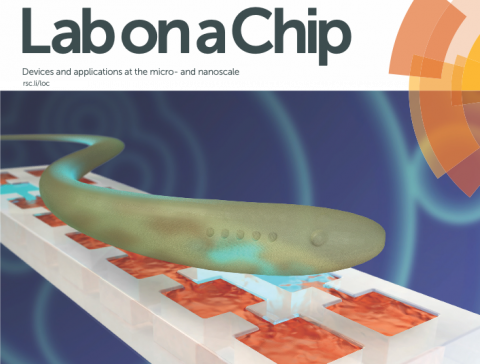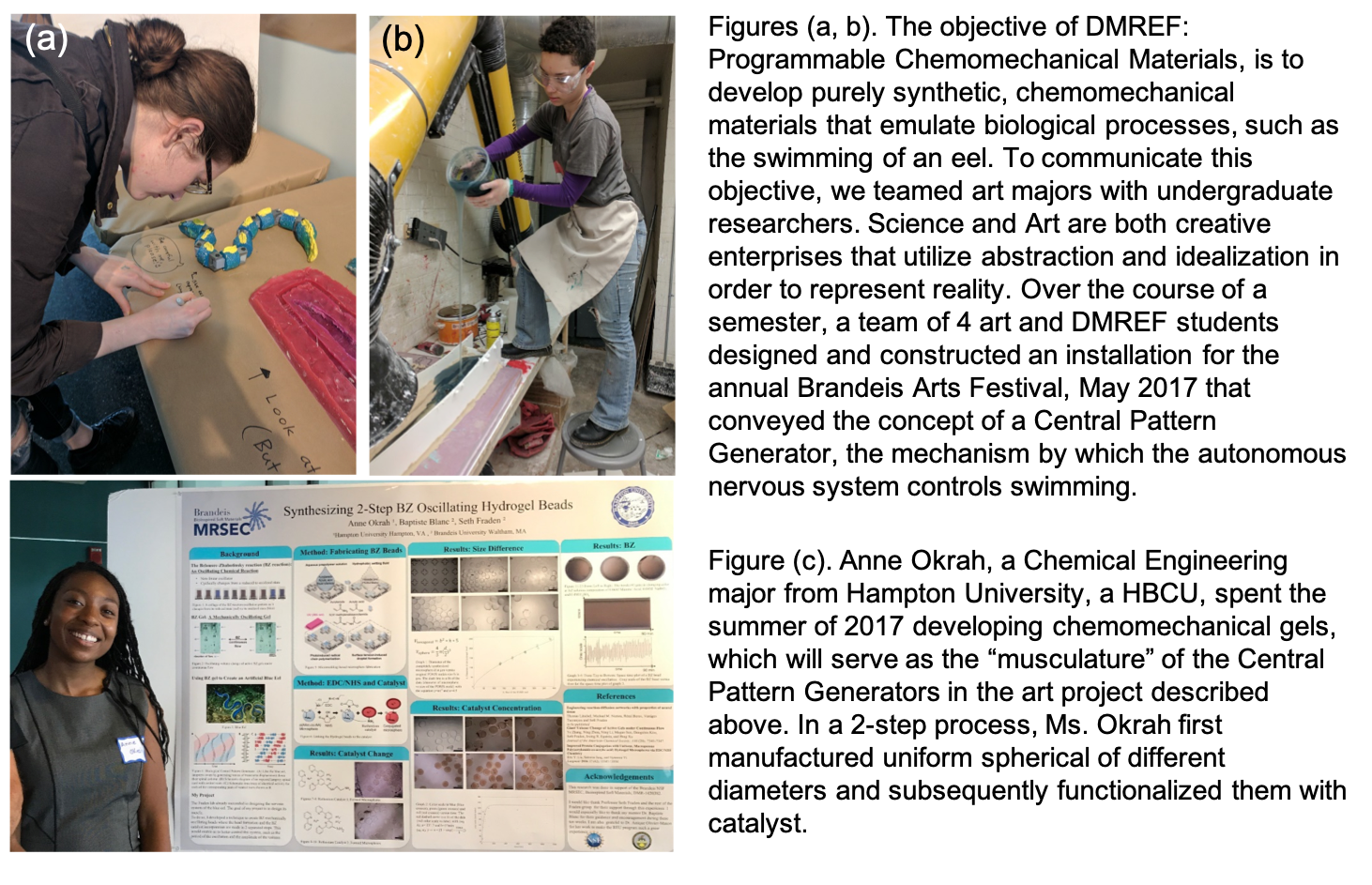 Neural tissue evolved 3.5 billion years after the origin of life, which is a testament to its complexity, and is found in almost all multicellular life, which is a testament to its importance. At the coarsest level of description, neurons are non-linear oscillators that when coupled together in tissue through excitatory and inhibitory connections give rise to complex spatio-temporal patterns that control musculature. Extrapolating from this general definition of a neuronal network, we reproduced the dynamics that produce the swimming of an eel on an abiologic reaction-diffusion platform. We employ the well-known oscillatory Belousov-Zhabotinsky reaction, coupled with advances in soft lithography that allow the engineering of synthetic reaction-diffusion networks over which we design (i) the topology of the network, the (ii) boundary and (iii) initial conditions, (iv) the volume of each reactor, (v) the coupling strength, and (vi) whether the coupling is of an inhibitory or excitatory nature. It is important to note that the engineering principles we identify are general and can be applied to other oscillatory reaction-diffusion systems. This work required the integrated efforts of experimentalists and theorists to design, construct and characterize the materials.
Neural tissue evolved 3.5 billion years after the origin of life, which is a testament to its complexity, and is found in almost all multicellular life, which is a testament to its importance. At the coarsest level of description, neurons are non-linear oscillators that when coupled together in tissue through excitatory and inhibitory connections give rise to complex spatio-temporal patterns that control musculature. Extrapolating from this general definition of a neuronal network, we reproduced the dynamics that produce the swimming of an eel on an abiologic reaction-diffusion platform. We employ the well-known oscillatory Belousov-Zhabotinsky reaction, coupled with advances in soft lithography that allow the engineering of synthetic reaction-diffusion networks over which we design (i) the topology of the network, the (ii) boundary and (iii) initial conditions, (iv) the volume of each reactor, (v) the coupling strength, and (vi) whether the coupling is of an inhibitory or excitatory nature. It is important to note that the engineering principles we identify are general and can be applied to other oscillatory reaction-diffusion systems. This work required the integrated efforts of experimentalists and theorists to design, construct and characterize the materials.

